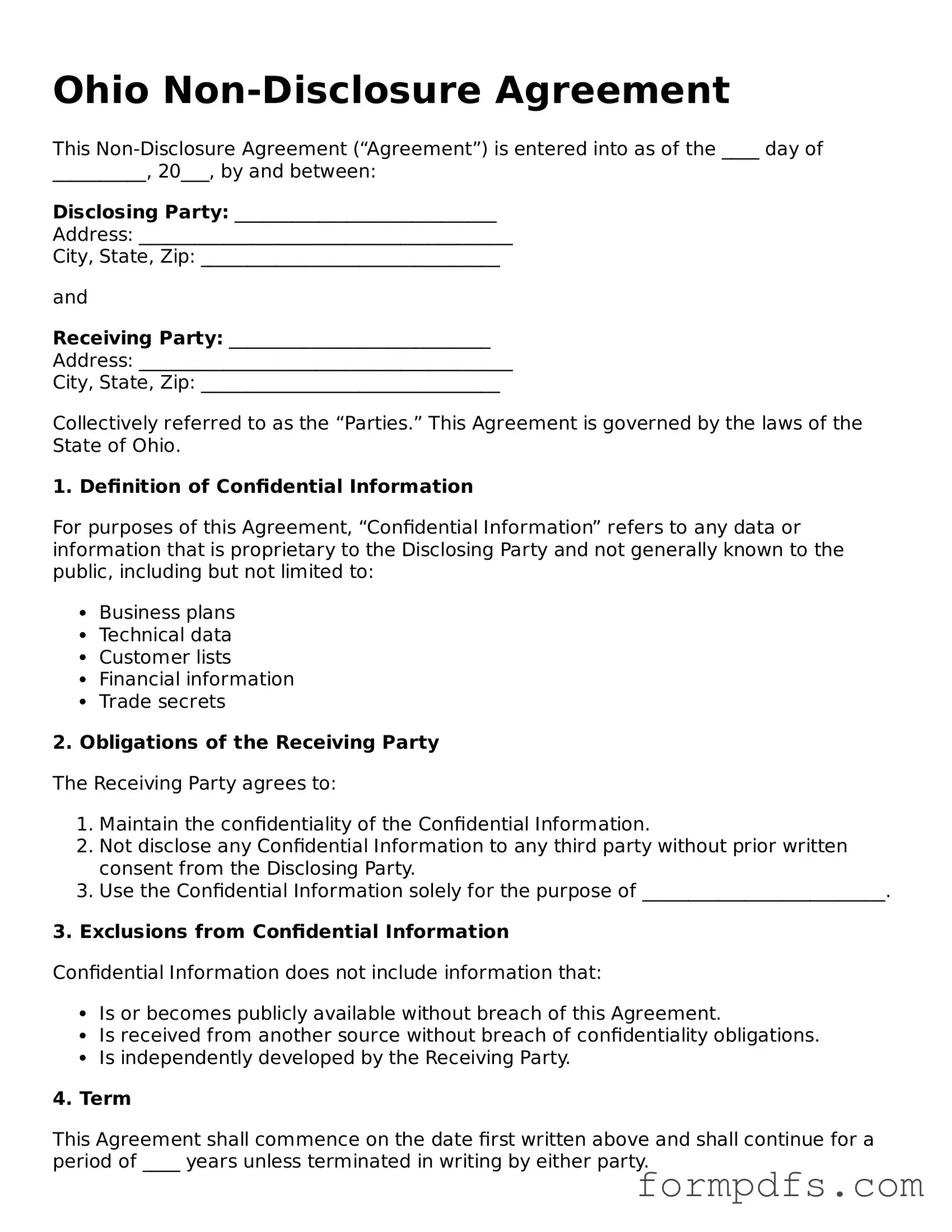What is a Non-disclosure Agreement (NDA) in Ohio?
A Non-disclosure Agreement (NDA) in Ohio is a legal contract that protects confidential information shared between parties. It ensures that sensitive information, such as trade secrets or proprietary data, remains private and is not disclosed to unauthorized individuals or entities. NDAs are commonly used in business relationships, employment situations, and during negotiations.
Who can use an NDA in Ohio?
Any individual or business can use an NDA in Ohio. This includes employers who want to protect their company's confidential information, entrepreneurs sharing ideas with potential investors, or businesses entering into partnerships. Essentially, anyone who needs to safeguard sensitive information can benefit from an NDA.
What should be included in an NDA?
An effective NDA should clearly outline the parties involved, define what constitutes confidential information, specify the obligations of each party regarding that information, and state the duration of confidentiality. Additionally, it may include terms regarding the return or destruction of confidential materials after the agreement ends.
How long does an NDA last in Ohio?
The duration of an NDA can vary based on the terms agreed upon by the parties. Typically, NDAs last for a specified period, often ranging from one to five years. However, some information, such as trade secrets, may remain confidential indefinitely, depending on the circumstances surrounding the information.
What happens if someone breaches an NDA?
If a party breaches an NDA, the injured party may seek legal remedies. This can include monetary damages, injunctive relief to prevent further disclosure, or even punitive damages in severe cases. The specific consequences depend on the terms outlined in the NDA and the extent of the breach.
Can an NDA be enforced in Ohio?
Yes, an NDA can be enforced in Ohio as long as it meets the legal requirements for contracts. This includes mutual consent, a lawful purpose, and consideration. Courts in Ohio generally uphold NDAs, provided they are reasonable in scope and duration.
Are there any limitations to what an NDA can cover?
Yes, there are limitations. An NDA cannot protect information that is already public knowledge, information disclosed by a third party without a confidentiality obligation, or information that the receiving party independently develops. Additionally, NDAs cannot be used to cover illegal activities or prevent whistleblowing.
Is it necessary to have a lawyer draft an NDA?
While it is not legally required to have a lawyer draft an NDA, it is highly advisable. A legal professional can ensure that the agreement is comprehensive, enforceable, and tailored to the specific needs of the parties involved. This can prevent potential disputes and misunderstandings in the future.
